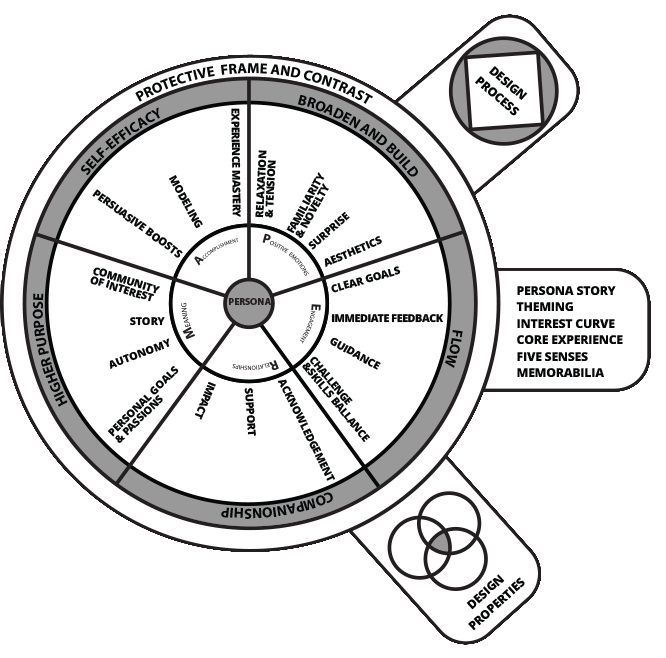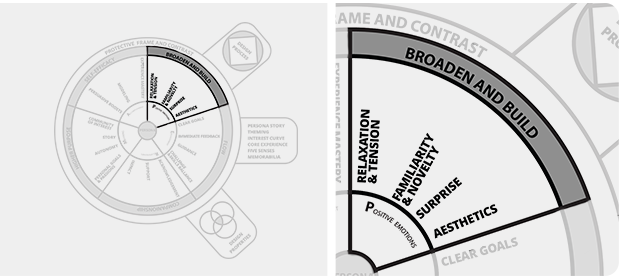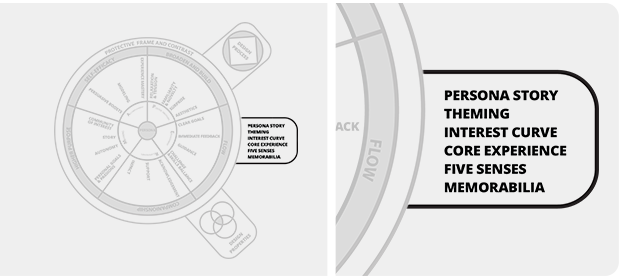The Memorable Experience Design Framework

Tourism is extremely accessible. More and more tourists have become very skilled at using search and metasearch engines to find the best price-quality ratio for tourism services.
Businesses started to do cost-cutting and automation of their services in order to remain competitive. Cheap and fast access to destinations has triggered destinations and tourism businesses to compete in a global market that now has also competitors from the rapid growing sharing economy (Airbnb, Uber,Eatwith).
Businesses and destinations that cannot differentiate themselves will be evaluated by tourists only on the accessibility and quality-price ratio. Those who cannot offer a competitive price will shut-down and the ones remaining will have very low profit margins.
Pine & Gilmore, the authors of the Experience Economy, call this phenomenon “commoditization”. According to them we are in a transition from a service economy to an experience economy.
In the experience economy learning how to stage and design memorable experiences by customising your offer lies at the success of market differentiation.
Disneyland, Cirque du Soleil and the Tomorrowland Festival are some of the pioneers in experience staging. But how about game design studios like Ubisoft, Blizzard or Atari?
They are also pioneers and masters of experience staging, but in a virtual world. Much is to be learned from them on how to apply their design principles in order to design engaging and memorable experiences. The transition of design thinking from game worlds to real life experiences is called Gamification.
Ever since gamification was named a trend in tourism by Euromonitor International at the World Travel Market in 2011; seminars, dedicated conference tracks, industry best practice cases and articles started to analyse the topic in the context of tourism. However, many are still confusing gamification in tourism with the creation of loyalty programs, creating competitions or developing full games around their businesses.
The aim of gamification in tourism is designing memorable experiences for your guests. Our recent book introduced the Memorable Experience Design (MED) Framework that shows how to create tourism experience concepts by linking experience staging with game design thinking.
The framework is aimed to be an inspiration and a brainstorming tool for tourism providers that wish to create memorable experiences for their actual or potential guests. Tech and non-tech examples from tourism for each element of the MED Framework are given.
The Memorable Experience Design Framework (Bulencea and Egger, 2015)
Each pillar of the framework has several elements that help trigger a desired outcome. In this blog post just the Positive Emotions Pillar of the model is going to be shortly explained. This will be done along side with the Experience Enhancers found at the right hand side of the Model. The Design Properties, Design Process and other parts of the model are not included.
Positive Emotions

The goal of the Positive Emotions is to help visitors positively broaden their current mood. This should trigger them to be in a state where they are intrinsically motivated to build and develop their skills. This can be achieved by using the different techniques outlined in the framework, such as:
1. Relaxation and tension
Games are very good at offering players the experience of an oscillation between relaxation and tension. This helps players experience the pleasure of variety and anticipation.
When people are too relaxed, they feel bored and when they are experiencing too much tension, they feel worn out. Therefore, this oscillation between the two is a crucial characteristic to human enjoinment and an essential ingredient to place people in a right frame of mind to be ready to work hard on completing challenges.
Game design uses several methods for implementing this oscillation:
progression pattern -start with easy challenges and add challenges that become progressively harder.
boss fights – a challenge that has a much higher level of difficulty than everything that the player encountered until then; the player will need to use all the knowledge and skills that he learned until then in order to overcome the challenge.
lifejackets -parts where players can relax after overcoming a very hard challenge in the game (e.g. boss fight); lifejackets are intended to relax and rejuvenate players so that they are ready to tackle even more difficult challenges that are about to follow.
2. Familiarity and novelty
Very successful games find a way of how to mix something familiar with something novel. Familiarity builds confidence, novelty builds anticipation.
Both play an essential role in triggering positive emotions. Surprisingly, during the pre-trip phase of a holiday, it has been found that people experience the largest boost in happiness
due to anticipation. The following game design elements can be used to create a mix between familiarity and novelty:
discovery – considered to be one of the main pleasures behind playing games, it refers to exploring, finding out hidden information or simply traversing the sheer variety of a game space
game moods -this represents the different ways in which a player can select to play the same game; it can be by changing the difficulty of the game or by adding or removing game constraints
special events – in the game there can be some special events that happen only at a specific time, due to the exclusivity effect this helps generate emotions such as joy, interest, pride, hope or inspiration
new levels and worlds – players that finish a specific set of challenges get access to a new area that was locked until then, this creates anticipation and excitement as players enter an environment that looks different and has new challenges to explore but still uses the same game mechanics.
3. Surprise
Surprises can instantly stimulate a large variety of positive emotions. Their power has been strongly underlined in both tourism and game design.
Here are ways in which games create surprises for their players:
unexpected rewards – with most games at different points of the game, players receive an unexpected surprise; this generates positive emotions and places the player in a positive frame of mind – excited and motivated to continue playing
random rewards- with random rewards the player consciously knows that there is a chance to receive a reward during the play experience, the surprise comes from not knowing when exactly; emotions such as hope, interest and anticipation are triggered
easter eggs – they are small secrets that have that have to be yet to be discovered; they are usually hidden objects in unexpected places and because of that easter eggs prompt players to pay more attention to the experience; emotions such as interest and hope are generated. If someone else hints towards where they can be found, gratitude is generated once found players can experience amusement, inspiration, pride or awe.
4. Aesthetics
Aesthetics are used to create game worlds that are attract players simply by the way the game sounds, looks and feels. By surrounding the player with beautiful artwork every minute that will be spend in the game will be a reward in itself.
Aesthetics engage people by providing them with unprecedented experiences through beauty and thus creates an intangible value that makes people tolerate some imperfections of the experience.
This is why Airbnb works so well in the tourism context.
environment – games use environmental driven emotions by stimulating weather, a specific season or other types of created environments to heighten and stimulate players’ feelings
fantasy – people tend to experience fun by pretending to live in a magical place; with fantasy game designers have liberty to design beautiful worlds that give players the impression of being immersed in a magical world and it leaves them in a state of awe
music and sounds – action, ambiental or scary music combined with non-musical sounds such as the sound of a heartbeat are used to intensify emotions.
All the elements summed up above together show different ways how to generate positive emotions for guests. Each sub-element has an example from tourism to help the reader understand how this can be applied.
A non-tech example of how to generate positive emotions with the help of easter eggs is Wroclaw’s Dwarfs.
In the city of Wroclaw, the current European Capital of Culture, one can find approximately three hundred small dwarf sculptures that are spread throughout the city.

The dwarfs have been on the streets of Wroclaw since 2001, and their numbers are increasing each year. Because they are so small, one has to pay attention to his or her surroundings to notice them.
Each has a story and he is linked with either the history of the city or some nearby venues such as a pub, restaurant, cinema or hotel. The dwarfs have become a symbol of the city and a tourist attraction.
According to TripAdvisor, a dwarf hunt is one of the top things to Wroclaw because it is a fun way to explore and get to know the city. People can find their story by either using a dwarf search engine online or by using a dwarf searching app.
Recently there are even dwarf guided tours and a dwarf festival organised. Having hidden dwarfs at every step, raises tourists and locals interest to look for them. Once discovered they generate a large variety of positive emotions depending on the story, surrounding environment and appearance of each dwarf.
While in Wroclaw it is a common sight to see people joking, telling stories and making pictures while gathered around dwarf statues.
Experience Enhancers

The mix of Positive Emotions, Engagement, Relationships, Meaning and Accomplishment can be further enhanced by using the following techniques (known as Experience Enhancers):
describing the story of how your target group ideally should experience your concept (persona story)
having a theme and a core experience focus, this can help you make faster decisions of what to include in the concept
placing the elements of the experience on an engagement curve (interest curve) to know when to best include each element during the experience
strengthening the experience by enabling it to be felt with all the five senses
offering guests memorabilia so that they can always easily recall refer to their experience once it is over with the help of the object received
For example, according to the interest curve (see below), it seems that most successful entertainment experiences follow a similar pattern.

Schell (2008) as in Bulencea and Egger (2015)
(a) the guest comes in contact for the first time with the experience with a particular level of expectations based on his/her knowledge of similar experiences, what he/she might know about the experience from friends, advertising, media, etc. Even if it is desirable to have guests who have a high interest level at this point, trying to raise the interest level so much to the point of inflation/saturation before the start of the experience might affect the rest of the experience by making it less impressive.
b) this is where the experience starts. This is point is also named the “hook” as it is supposed to grab attention and make the guest excited. At this time of the experience the guest will be roughly informed what to expect next. If the hook is good, it will help sustain the guest’s focus for the upcoming part of the experience which is less intensive but nevertheless required to build an engaging path towards the climax of the experience.
With a well-designed experience, the guest’s interest will intensify, reaching peaks at points (c) and (e). The experience will also slightly drop at points (d) and (f) but just to allow the guest to relax and build anticipation for the peaks to come.
In the end at point (g), the experience should reach some sort of climax and then by point (h) the experience. If we think of how the best fireworks shows we attended are structured, a similar pattern can be identified. Besides knowing when to insert different elements within an experience this tool can also be used as an evaluation metric of an experience that is already implemented.
The National Mall is a tech example of how the interest curve is used to generate positive emotions with the help of music and sounds.
Here is a TED Talk on the initiative (2m.44s for the specific example):
In future blog posts also the other parts of the Memorable Experience Design Framework will be explained. Until then you can look at the blog for more than 20 examples that show how to create memorable experiences or read more about the framework in the book.
Soon we will launch a 4 day event where you can learn how to design memorable experiences. To get notified when we will open the event and also get blog updates – sign-up for the newsletter here.
Follow on Twitter for the latest updates and Gamification in Tourism information
NB: This article was originally published on Tnooz.com
The post The Memorable Experience Design Framework appeared first on Gamification in tourism.







